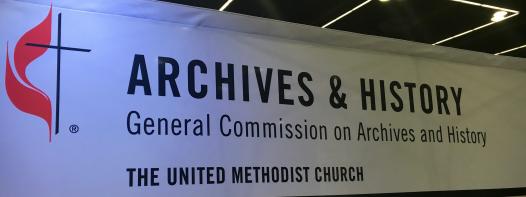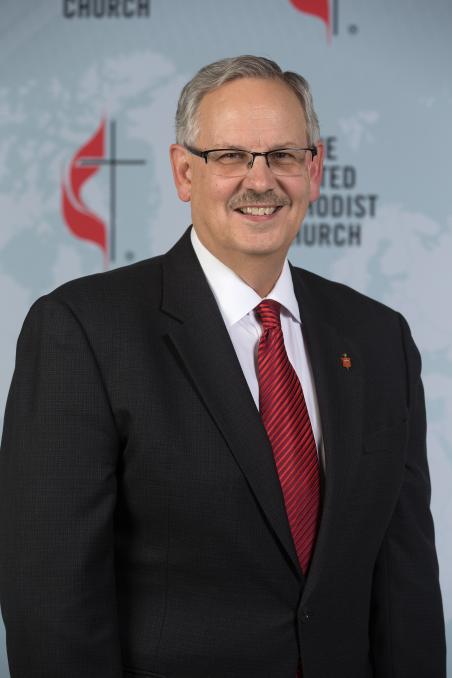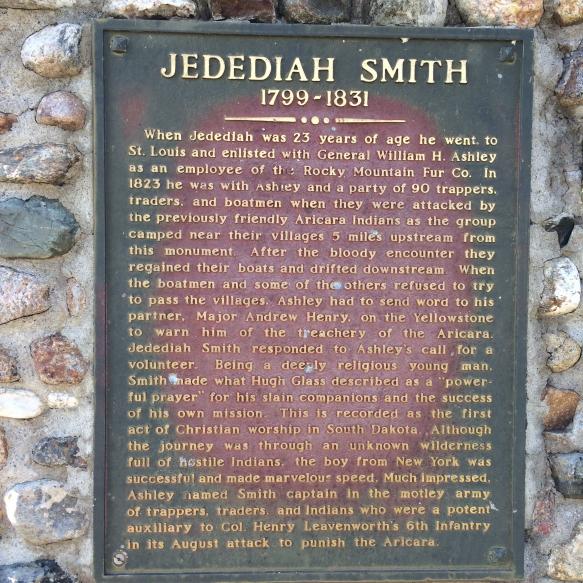
Dakotas hosts North Central Commission on Archives and History
Content provided by Rev. Duane Coates, Hettinger UMC and Pat Breidenbach, Mitchell First UMC. Both are members of the Dakotas Conference Commission on Archives and History. Coates is the chair of the North Central Jurisdiction Commission on Archives and History.
Thirty-four history buffs, spouses and others from 10 of the 11 annual conferences in the North Central Jurisdiction came to Bismarck, ND, July 10-13, for the annual meeting of the North Central Jurisdiction Commission on Archives and History. Photo below is a file photo.
 With a theme "Flowing Faith on the Missouri," the Dakotas Conference Commission on Archives and History (CAH) hosted the North Central Jurisdiction convocation. Bishop Bruce Ough preached at the opening worship at Bismarck Legacy United Methodist Church in Bismarck, using the text Acts 16:6-10. In that Scripture, the Holy Spirit gave the Apostle Paul a vision of “crossing over” into Macedonia, which was new territory for Christianity at the time. Ough retraced some of the history of bold faithful discipleship from Paul through John and Charles Wesley to the earl
With a theme "Flowing Faith on the Missouri," the Dakotas Conference Commission on Archives and History (CAH) hosted the North Central Jurisdiction convocation. Bishop Bruce Ough preached at the opening worship at Bismarck Legacy United Methodist Church in Bismarck, using the text Acts 16:6-10. In that Scripture, the Holy Spirit gave the Apostle Paul a vision of “crossing over” into Macedonia, which was new territory for Christianity at the time. Ough retraced some of the history of bold faithful discipleship from Paul through John and Charles Wesley to the earl y Methodists in the Dakotas who pushed across the Mighty Missouri River to places like Gladstone, ND.
y Methodists in the Dakotas who pushed across the Mighty Missouri River to places like Gladstone, ND.
Ough chairs the Council of Bishops, which formed A Way Forward Commission dealing with controversies that threaten the unity of our 49-year-old denomination. So, using the spirit-filled boldness that characterizes much of his preaching and leadership, Ough said, “The only way forward for our great revival movement is to maintain and revive, and renew our ‘crossing-over-to-Macedonia’ legacy. The only way for our great Wesleyan movement to sustain our mission of making disciples of Jesus Christ for the transformation of the world is to maintain, and revive and renew our complete and total surrender to the leading of the Spirit of Jesus.”
Click here to download a copy of Ough's sermon.
Photo of Bishop Ough by Mike DuBose, United Methodist Communications.
In the sanctuary of Legacy UMC, which takes its name in part from Psalm 78:2-7, Ough reminded the attendees of their role not only in preserving the past, but also in passing our purpose into the future. “Legacy is not about holding onto the past,” Ough told the archivists. “It is about building on a sure foundation. A legacy is something handed down by a predecessor. … Friends, you are our … legacy keepers, … to help carry the purpose of our Methodist Movement into the future.”
Following worship, the Rev. Kermit Culver, Northwest District Superintendent, and former senior pastor at Legacy, gave the first of six presentations about the history of Methodism and/or the people of the Dakotas according to the theme, “Flowing Faith on the Missouri.” Culver spoke about the history of Legacy, which began as a church in the tradition of the Evangelical Association. As an Evangelical Church, lay members there started what is now the Sanford Hospital in Bismarck.
Other presentations were: “History of Rural and Fort Rice Methodist Churches,” researched by Jim Unkenholz and presented by the Rev. Duane Coates; “The Call to The Oceti Sakowin: A Trajectory of History to the Backwater Bridge,” written and presented by the Rev. John Floberg, priest at Episcopal churches in Cannonball and Fort Yates, ND (this presentation was given at St. James Episcopal Church in Cannonball); “The Missouri, Methodism and McCabe,” by Louise Broten, lay leader at McCabe UMC in Bismarck, where the paper was presented; “J.B.S. Todd: His Role, Wisdom, and Vision for Dakota,” given by Brad Tennant, a member of Aberdeen First UMC and professor at Presentation College in Aberdeen. (The subject of this paper was an early Methodist member of what is now Yankton UMC. He was also Dakota Territory’s first delegate to Congress.) The last presentation was: “Holding on to Culture: The Effects of the 1837 Smallpox Epidemic on Mandan and Hidatsa,” given by Jayne Reinhiller of Williston. Reinhiller, the older daughter of Revs. Ross and Val Reinhiller, won an award for this paper as an undergraduate student at Anderson University in Indiana. Jayne intends to enroll this fall as a graduate student at the University of Nebraska, Lincoln.
 On the second day of the four-day meeting, participants took a bus tour from Bismarck to Mobridge and back. In Mobridge, the group had lunch at the Mobridge UMC, served by their United Methodist Women unit. They also viewed the Oscar Howe original murals in an auditorium, visited the local Klein Museum and the Jedediah Smith plaque at Indian Memorial Recreation Center on the west side of Mobridge. This is a United Methodist historic site (one of 13 in our annual conference) because it marks the place where in 1823, Jedediah Smith, a Methodist, uttered a prayer, making it the spot of the first recorded act of Protestant worship in what would become Dakota Territory. Photo by Rev. Duane Coates.
On the second day of the four-day meeting, participants took a bus tour from Bismarck to Mobridge and back. In Mobridge, the group had lunch at the Mobridge UMC, served by their United Methodist Women unit. They also viewed the Oscar Howe original murals in an auditorium, visited the local Klein Museum and the Jedediah Smith plaque at Indian Memorial Recreation Center on the west side of Mobridge. This is a United Methodist historic site (one of 13 in our annual conference) because it marks the place where in 1823, Jedediah Smith, a Methodist, uttered a prayer, making it the spot of the first recorded act of Protestant worship in what would become Dakota Territory. Photo by Rev. Duane Coates.
The North Central Jurisdiction Commission on Archives and History (NCJCAH) is a body created by General Conference to be auxiliary to the General Commission on Archives and History (GCAH). The membership comprises the chairperson of each of the jurisdiction’s annual conference commissions on archives and history, the members of the GCAH with membership or residence in conferences of this jurisdiction, and two additional voting delegates from each of the jurisdiction’s annual conferences. (Northern Illinois sent no delegate to this year’s meeting.)
The NCJCAH meets annually in a location that rotates among the conferences and/or episcopal areas. The last time the Dakotas hosted was in 2008 in Mitchell. Among other duties, NCJCAH provides a way for each annual conference in the jurisdiction to meet its mission of providing a connection beyond the local church. The NCJCAH does that by hearing reports from each of the jurisdiction’s annual conference commissions as well as a report from the general secretary of GCAH or his designee. This year, that report was given by Dale Patterson, general archivist of the UMC.
The NCJCAH is chaired by the Rev. Duane Coates, pastor at Hettinger. Other members of the Dakotas Conference to host and attend the meeting were: Revs. Hazel and Steve Behrens, George and Pat Breidenbach, the Rev. Sheri Fadley, Cheryl Finney and Laurie Langland.
Video of the presentation “Holding on to Culture: The Effects of the 1837 Smallpox Epidemic on Mandan and Hidatsa,” given by Jayne Reinhiller of Williston.